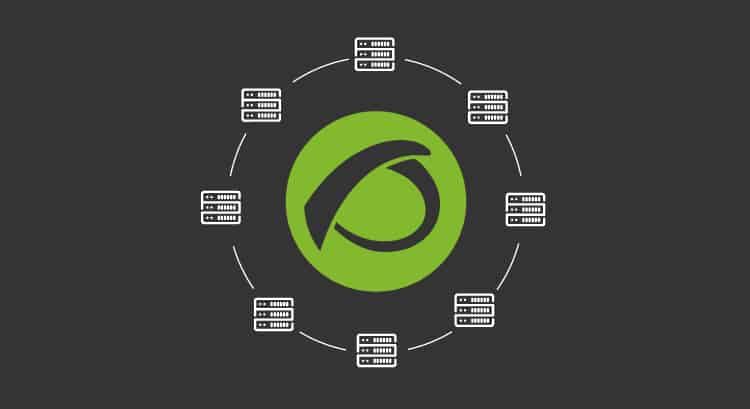Why server performance monitoring is important and how to do it
Servers are an essential part of the IT of many companies. A server down could cause significant damage: from service stopping and productivity decreasing to losing direct sales and image problems that cause loss of customers.
But these problems are not limited to the times when a server stops working. It is also common for this one, or any of the devices or applications involved in its operation, to suffer deficiencies – sometimes difficult to notice – that cause low performance.
Therefore, server performance monitoring becomes a key task.
What is server performance monitoring?
Server performance monitoring consists of supervising the different elements that allow the correct performance of a server, in order to find out whether its performance is as expected. The main elements are as follows:
Servers
Of course, the servers themselves are the axis on which their monitoring revolves. For server performance monitoring we must monitor aspects such as their temperature, CPU status as well as that of memory, storage disks, services, etc.
Networks
An isolated server, without a network through which it can communicate and provide service, would not make any sense. For this reason, server performance monitoring cannot be understood without including the monitoring of its network elements. It will be necessary to monitor whether the connection is available and if the services it provides work properly, whether it works at the necessary speed or if there is a “bottleneck” in its devices, such as routers or switches, etc.
Applications
Finally, remember that one of the fundamental tasks of servers is usually to provide service to applications, both aimed at clients and those that allow the company itself to work. Therefore, server performance monitoring will “close the circle” of server monitoring, allowing you to not only know whether they are working, but whether they are doing it as they should.
What differentiates Pandora FMS when we talk about server monitoring?
Pandora FMS is an on-premise monitoring software that covers device monitoring and that of networks, applications, services and much more. Of course, it is an ideal tool for server performance monitoring. Let’s see some of the features that make it different:
-Monitoring with or without agents
Pandora FMS is a software capable of monitoring locally by installing some small pieces of software on servers called “agents” that have a minimal impact on the server. It uses the system APIs to retrieve information, although it can also run commands or scripts to retrieve the information from wherever it might be located. The information collected by the agents is sent to Pandora FMS server, which stores it to offer the possibility of having tools such as a hardware inventory that will collect all kinds of useful information, such as installed applications, licenses or active users.
On the other hand, Pandora FMS also offers the remote monitoring possibility, without the need to install an agent. For example, you can retrieve a large amount of information on Windows servers, through WMI.
-Custom application monitoring
Pandora FMS incorporates preconfigured templates that allow deploying plugins with which to custom monitor based on the existing needs. These plugins are created by Pandora FMS developers and include utilities for corporate tools such as VMWare, Oracle, SQLServer, Jboss or SAP.
-Visual console and reports
Pandora FMS is a highly visual software that makes the work of the technicians in charge of its use easier, through a wide variety of display tools that will allow them to see the performance and availability of their environment. In addition, Pandora FMS reports, customizable and easy to generate, can store and display data older than 3 years old thanks to its historical database, being able to obtain SLA information. Additionally, reports can be scheduled to be emailed weekly.
-Centralized monitoring
Pandora FMS has tools focused on large environment efficient management. Thanks to policies and massive operations, users can save time and work when carrying out similar monitoring tasks in different environments, dealing with sets of machines in bulk.
-High scalability
Pandora FMS is a powerful and scalable tool. Each Pandora FMS server (understood as not the servers to be monitored, but the ones that will support Pandora FMS) can maintain up to 2,500 agents. For larger environments you can scale horizontally by adding more Pandora FMS servers and manage them all centrally through your Metaconsole.
If you want, you can learn even more about Pandora FMS server monitoring features and see its wonderful look in the following video.
Also, you have more information here.
If all of the above has not helped you decide on Pandora FMS as a server performance monitoring tool, how about trying it yourself? If you have to monitor more than 100 devices you can enjoy a FREE 30-day Pandora FMS Enterprise DEMO. Get it here .
Finally, remember that if you have a reduced number of devices to monitor, you can use Pandora FMS OpenSource version. Find more information here .
*Article translated by Laura Cano

Dimas P.L., de la lejana y exótica Vega Baja, CasiMurcia, periodista, redactor, taumaturgo del contenido y campeón de espantar palomas en los parques. Actualmente resido en Madrid donde trabajo como paladín de la comunicación en Pandora FMS y periodista freelance cultural en cualquier medio que se ofrezca. También me vuelvo loco escribiendo y recitando por los círculos poéticos más profundos y oscuros de la ciudad.
Dimas P.L., from the distant and exotic Vega Baja, CasiMurcia, journalist, editor, thaumaturgist of content and champion of scaring pigeons in parks. I currently live in Madrid where I work as a communication champion in Pandora FMS and as a freelance cultural journalist in any media offered. I also go crazy writing and reciting in the deepest and darkest poetic circles of the city.

















